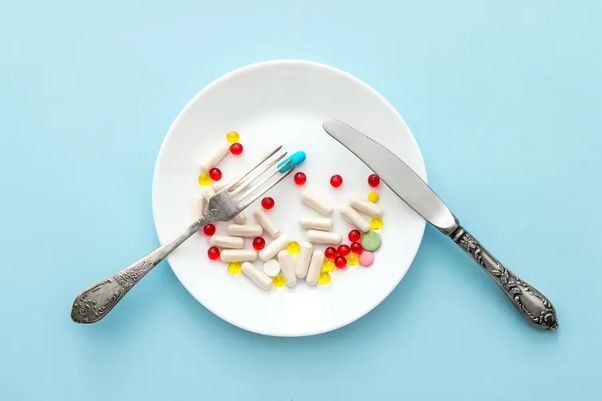Is peanut butter a fat or ? It's a question that's fueled endless debate in the fitness and wellness circles of social media, but it has a fairly simple answer, dietitians say. "People think peanut butter has a lot of protein," says Natalie Rizzo, registered dietitian and nutrition editor at TODAY.com.
And while it does have some protein, it's probably not as high-protein as people think. "Especially in the ," Rizzo says, peanut butter has a protein-rich reputation that it doesn't quite live up to. The debate comes up frequently for registered dietitian Theresa Gentile, especially in weight loss circles.

Some people say peanut butter is a fat, and therefore, "I shouldn't have it at all," Gentile says. "And then there are people who categorize it as a protein, and they'll have it unlimited." The truth is that peanut butter does provide protein, but it's a more plentiful source of fat, meaning it can be relatively high in calories per serving.
But that's not a reason to completely give up peanut butter, dietitians say. This creamy spread is a pantry staple for many good reasons, and it can be a healthy part of your diet — if you pay attention to what you're buying and how much you're eating. As , in two tablespoons of a standard store-bought creamy peanut butter, you'll find: So, is peanut butter a source of protein or fat? The simple answer is that, with 16 grams of fat and 7 grams of protein per serving, it's both.
Of course, there's a more complicated answer, too. Because 16 grams of that two-tablespoon serving is coming from fat, that means 76% of peanut butter is made of fat, says Gentile, who is also a spokesperson for the Academy of Nutrition and Dietetics. "It's already more than three-quarters fat source," she says, noting the is largely heart-healthy monounsaturated fat.
Meanwhile, the 7 to 8 grams of protein you'll find in an average serving of peanut butter accounts for about 20% of the food, Gentile says, which is about 8% of your . That means, overall, it's best to think of peanut butter as a heart-healthy, high-fat food that also gives you a boost of protein, fiber, vitamins and minerals, the dietitians say. Peanut butter contains , for instance, as well as calcium, and folate.
In fact, thinking of a food as only providing one nutrient or another is overly reductive. "It doesn't make sense," Gentile says, "because foods are complex, and reducing (peanut butter) to just one category is incorrect." Even chicken breast — often considered the gold standard of lean protein — , Rizzo notes.
While peanut butter has a higher percentage of fat than some other foods, "it still has those other healthy things like protein, fiber and antioxidants," Gentile explains. Forcing peanut butter (or any food) into one nutrient category or another "contributes to the that runs too deep with food," she adds. The issue is that people tend to think peanut butter contains a lot more protein than it actually does, Rizzo says.
That means they might be getting less protein with a higher fat content and, therefore, more calories than they would from some other . "To get the amount of protein that you probably think you're getting, you'd have to eat a lot of it," Rizzo says. But that doesn't mean peanut butter is inherently bad for you or that you shouldn't eat it.
This creamy, salty, satisfying food can still be a part of your diet — even if you're watching calories. One of the reasons peanut butter is so filling is that combination of protein with fat, Rizzo says, which can keep you feeling satisfied for longer and, therefore, actually aid in weight management. "A spoonful of peanut butter keeps you full for like an hour," she says, "whereas if you had a handful of crackers, you'd be hungry five minutes later.
" Gentile agrees, adding, "I'd much rather someone have a tablespoon or two of peanut butter than a whole bag of pretzels for the same calories," she says. Whether you're counting macros or not, you don't have to give up peanut butter just because it's high in fat. The key with peanut butter, as with other calorie-dense foods, is to eat them in moderation.
For starters, "I suggest not eating it out of the jar," Gentile says. If you just want a spoonful of peanut butter, measure out an actual tablespoon rather than trying to eyeball it. From there, think of peanut butter as a way to make your snacks go further, for instance, such as pairing it with whole-grain crackers, banana or apple slices or veggies.
Gentile also suggests putting some on or , or including it in smoothies. "Who doesn't like a good ?" she says. "As long as it's measured out and in moderation, that's a healthy food.
" Use it almost like you would a condiment, Rizzo says, where you're just adding a little here and there for flavor and fullness. The other important piece to keep in mind is the Ideally, the label should just list peanuts and, if you want, salt. The only oil in the product should be what's naturally occurring in the peanuts; there shouldn't be any added oils or sugar, Rizzo says.
While it's not a guarantee, the experts say opting for (the one with a layer of oil on top) usually means they'll be free from added oils. Hydrogenated oils, in particular, are used to make peanut butter creamy and fully mixed, Gentile says. Peanut butter may not be the high-protein savior you expected, but it's still a versatile, nutrient-dense and delicious staple.
.
Health

Is peanut butter really a high-protein food? Dietitians clear up misconceptions

Some people think peanut butter is a fat source while others think of it as a protein. So what's the truth? RDs reveal the answer, and how to eat it healthily.















